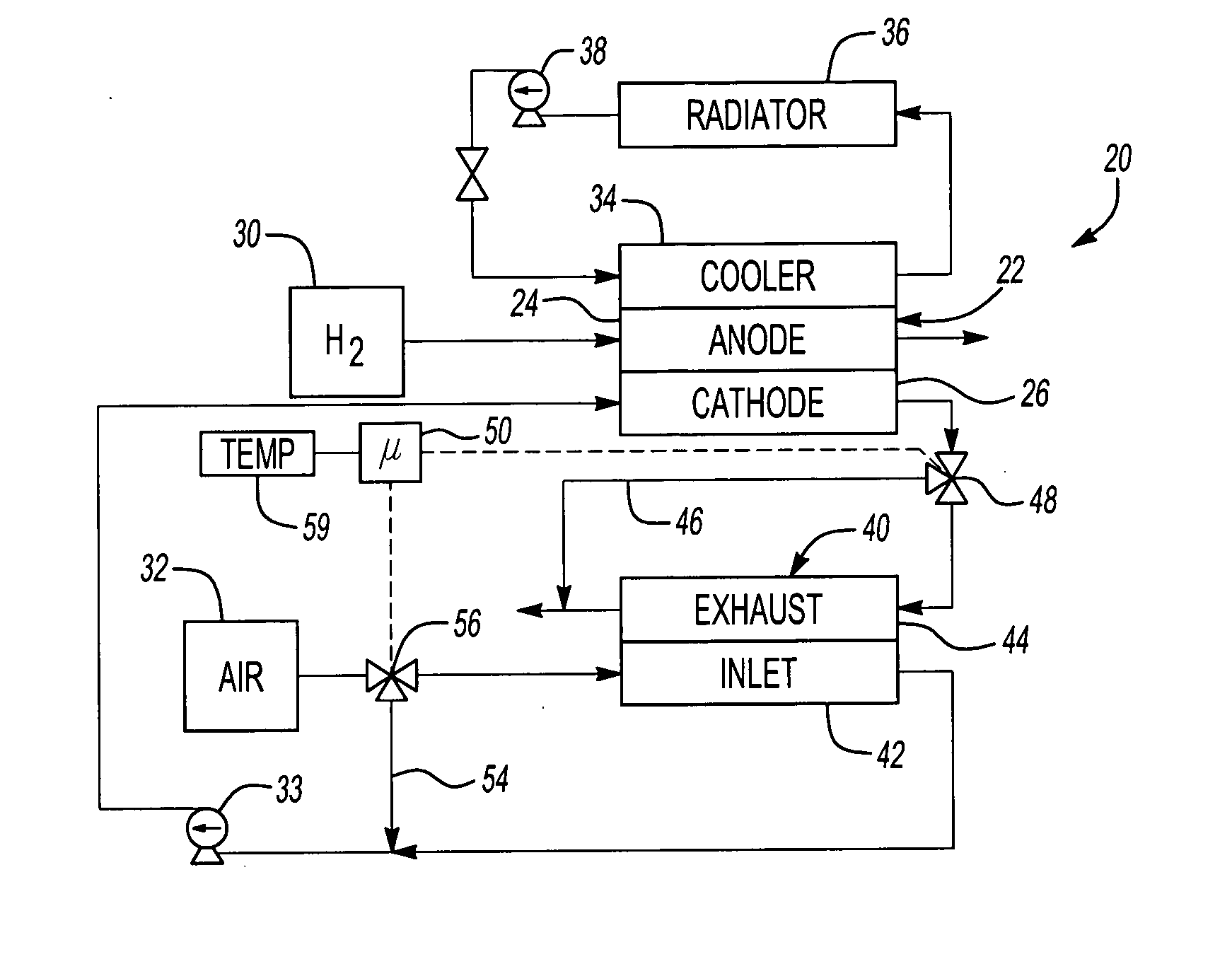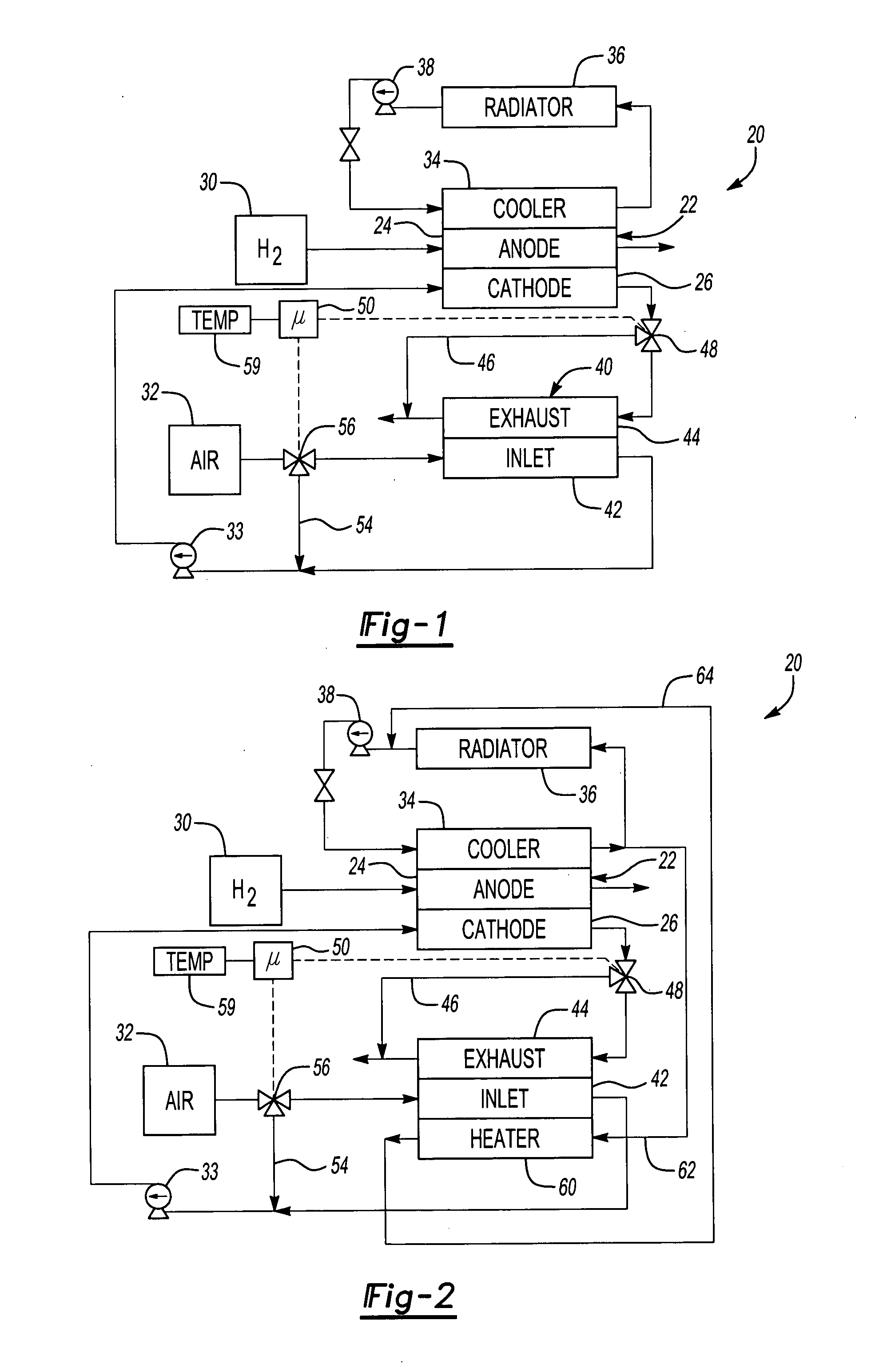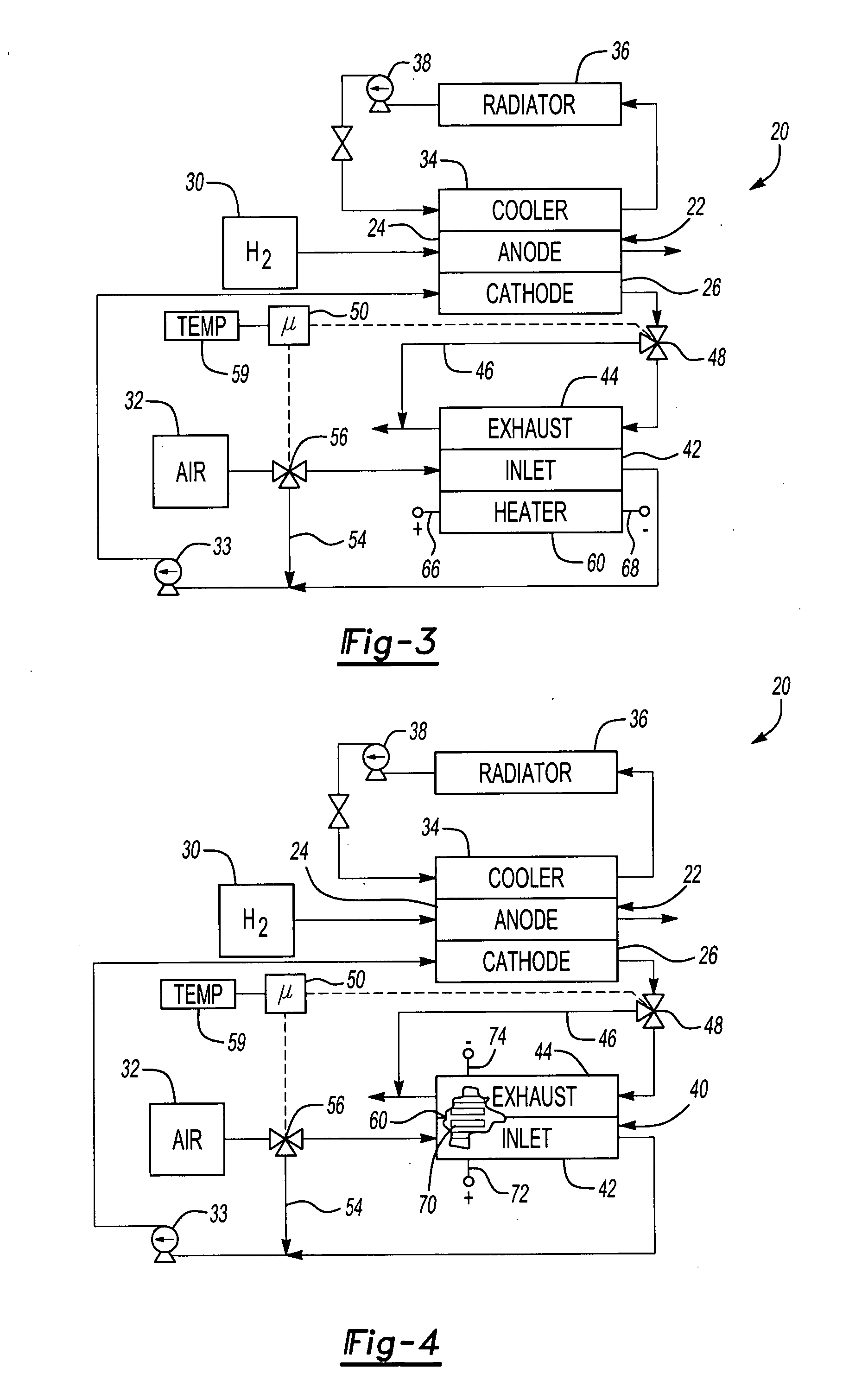Low temperature fuel cell power plant operation
a fuel cell and power plant technology, applied in the field of low temperature fuel cell power plant operation, can solve the problems of low fuel cell performance, cell dry out, reduced service life of fuel cell power plant, etc., and achieve the effect of inherent resistan
- Summary
- Abstract
- Description
- Claims
- Application Information
AI Technical Summary
Benefits of technology
Problems solved by technology
Method used
Image
Examples
Embodiment Construction
[0023]FIG. 1 schematically illustrates a fuel cell power plant system 20. A fuel cell 22 includes a first electrode 24 and a second electrode 26. The example fuel cell 22 is a proton exchange membrane fuel cell stack, the operation of which is known. The first electrode 24 in this example is the fuel cell anode and receives fuel, such as hydrogen or a hydrogen-containing gas, from a fuel source 30. The second electrode 26 in this example is the cathode and receives an oxidant, such as air, from a source 32, which is provided to the cathode 26 through action of a pump 33. The anode and cathode may be a single fuel cell plate, or a plurality of plates, as known.
[0024] The illustrated example includes a coolant loop associated with the fuel cell 22. Coolant loops are known and take a variety of forms. Coolant flowing through a cooler portion 34 passes through a radiator 36, such as a conventional heat exchanger. A pump 38 maintains the desired flow through the coolant loop.
[0025] An ...
PUM
 Login to View More
Login to View More Abstract
Description
Claims
Application Information
 Login to View More
Login to View More - R&D
- Intellectual Property
- Life Sciences
- Materials
- Tech Scout
- Unparalleled Data Quality
- Higher Quality Content
- 60% Fewer Hallucinations
Browse by: Latest US Patents, China's latest patents, Technical Efficacy Thesaurus, Application Domain, Technology Topic, Popular Technical Reports.
© 2025 PatSnap. All rights reserved.Legal|Privacy policy|Modern Slavery Act Transparency Statement|Sitemap|About US| Contact US: help@patsnap.com



